Do you have a question about the Agilent Technologies 54621A and is the answer not in the manual?
| Type | Digital Oscilloscope |
|---|---|
| Bandwidth | 100 MHz |
| Channels | 2 |
| Sample Rate | 200 MSa/s |
| Vertical Sensitivity | 2 mV/div to 5 V/div |
| Vertical Resolution | 8 bits |
| Input Coupling | AC, DC, GND |
| Input Impedance | 1 MOhm || 13 pF |
| Maximum Input Voltage | 400 V (DC + peak AC) |
| Trigger Modes | Edge, Pulse, Video, Pattern |
| Display Type | LCD |
| Display Size | 8 inch |
| Interface | GPIB, RS-232 |
| Power Requirements | 100-240 VAC, 50/60 Hz |
Verifies oscilloscope and accessory package contents for damage or missing items.
Instructions for safely cleaning the oscilloscope and adjusting its handle.
Steps to connect power, turn on the oscilloscope, and adjust display intensity.
Guide to connecting analog probes, digital probes, printers, and RS-232 cables.
Procedure to confirm the oscilloscope is functioning correctly after setup.
Explains how to access and configure the Quick Help system and set display languages.
Discusses acquisition modes and signal viewing techniques.
Interpreting the display, analog and digital channel operations.
Configuration for Autoscale, default settings, display grid, and printing output.
Explains time base controls, run/stop, single acquisition, and delayed sweep.
Guide to using cursors and automatic measurements for signal analysis.
Sets trigger modes (Auto, Normal), coupling, and holdoff time for stable triggering.
Configures probe attenuation, units, and input impedance for external trigger.
Triggers based on signal slope and voltage level for rising or falling edges.
Triggers on pulses with specific width criteria (less than, greater than, range).
Triggers on a specific logical pattern across multiple channels.
Triggers on specific CAN bus protocol events like Start of Frame.
Triggers based on the time duration of a specified channel pattern.
Triggers on specific I2C serial communication events (start, stop, address, data).
Triggers on specific LIN serial bus protocol events like Sync Break.
Triggers based on a sequence of defined events (find, trigger on, reset).
Triggers on SPI serial data patterns during specific framing periods.
Captures complex television signal waveforms by triggering on sync pulses or lines.
Triggers on specific USB protocol events like Start/End of Packet or Suspend.
Describes the pulse output for triggering external equipment.
Explains how MegaZoom provides deep memory with responsive control and high update rates.
Discusses how MegaZoom technology maintains a high display update rate.
Details setting analog channel sensitivity, coupling, impedance, and probe parameters.
Explains setting time base, sweep speed, delay, and using Main, Delayed, Roll, XY modes.
Describes Normal, Peak Detect, Average, and Realtime acquisition modes.
Covers setting display modes like Vectors, Infinite Persistence, and Grid intensity.
Explains how to pan and zoom acquired waveforms for detailed analysis.
Details controlling data acquisition using Run/Stop, Single, and persistence modes.
Covers digital channel setup, logic thresholds, probing practices, and channel labeling.
Guides on saving/recalling traces/setups, autosaving, and printing screen images.
Explains using main and delayed sweeps to capture and analyze waveform data.
Techniques to reduce noise using trigger path filtering and averaging.
Using Peak Detect and Infinite Persistence to capture transient events.
Describes using Roll mode for low-frequency signals and XY mode for phase analysis.
Performing basic math operations on analog channels and functions.
Computing Fast Fourier Transforms for frequency domain analysis.
Using horizontal and vertical cursors to measure time and voltage values.
Guide to using Quick Meas for automatic measurement of signal parameters.
Defining vertical levels for accurate automatic measurements.
Details on automatic measurements like Frequency, Period, Rise/Fall Time, Width.
Measuring time difference and phase shift between signals.
Details on automatic measurements like Amplitude, Average, RMS, Peak-Peak.
Measuring signal distortion before and after edge transitions.
Setting Quick Help languages and updating instrument software.
Configuring printer interface and managing floppy disk files.
Setting up I/O ports, real-time clock, and screen saver options.
Performing instrument calibration and self-testing procedures.
Adjusting expand settings and managing the default label library.
Detailed technical specifications for the Agilent 54620-series oscilloscopes.
Detailed technical specifications for the Agilent 54640-series oscilloscopes.




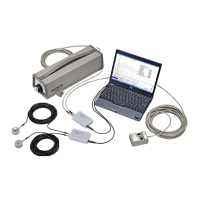
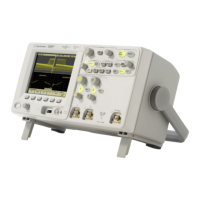
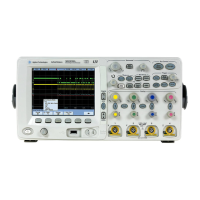
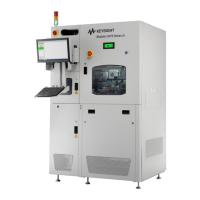


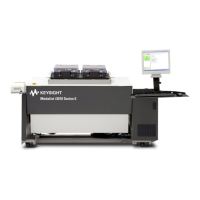
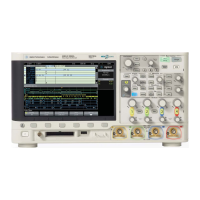
